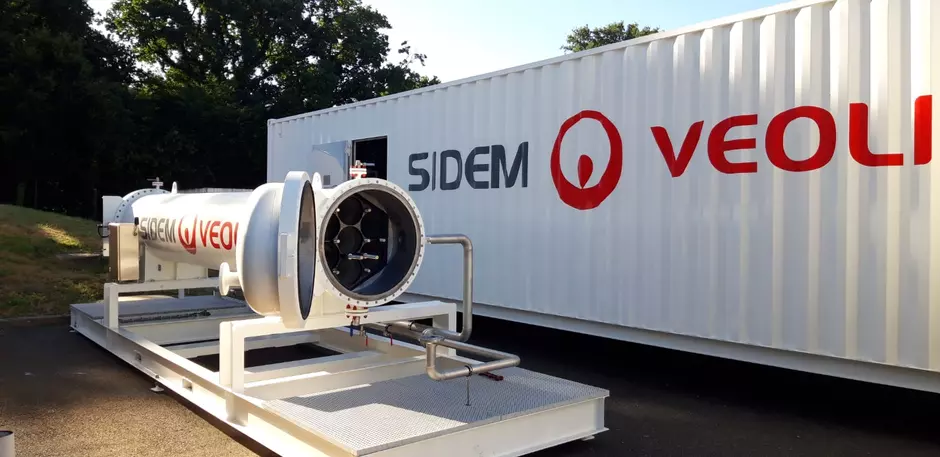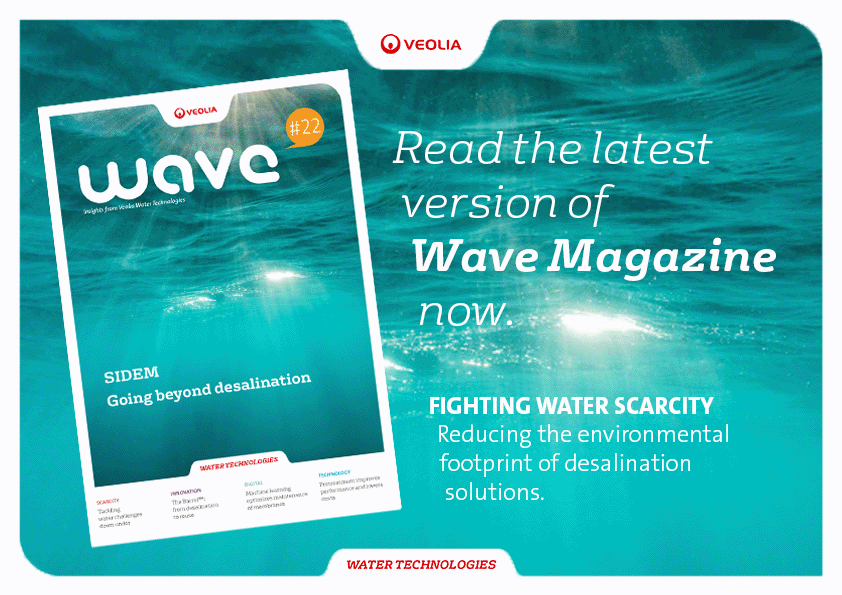When SIDEM first introduced the Barrel™ in 2019, it was a major innovation for seawater desalination. It soon became obvious, however, that the technology also perfectly addressed the challenges posed by water reuse.
In becoming the benchmark company for ecological transformation, Veolia is committed to accelerating and expanding the deployment of existing solutions, while simultaneously creating the solutions of tomorrow. The Barrel is a perfect example of this mindset.

The Barrel is a multi reverse osmosis (RO) element vessel that is designed to be a plugand-play system. The carbon steel pressure vessel is manufactured and tested off-site, and is delivered as a single unit so installation on-site can be fast-tracked and project schedules shortened. In addition, the modular design of the Barrel makes it highly scalable, offering varying capacities from 400 to 50,000 cubic meters a day per unit. It can also be used in place of existing RO membranes and nanofiltration skids for a more economically viable, sustainable and innovative alternative.
Compact and suitable for outdoor installations, the Barrel offers a footprint reduction of up to 25 percent and does not require a controlled environment. The sustainable solution also provides a reduction in electrical consumption in the range of 0.05 kilowatt-hour per cubic meter of fresh water produced.
Beyond sustainability, the unique design of the Barrel also significantly reduces the number of high-pressure piping connections down to just two — the raw water inlet and the brine outlet. This design feature makes it safer for operators and minimizes risks on-site during the maintenance and operation phases. Corrosion is less likely to occur as seawater leakage sources found on the multiple high-pressure connections of traditional RO skids are reduced.
The Barrel also has a built-in digitalization system with smart connectors providing real-time status updates on each membrane’s condition. In fact, their performance can be monitored automatically and accessed remotely — helping operators to make better decisions, whether to shut down, rotate, clean or replace membranes.
To preserve water resources, the key is to reduce consumption and above all reuse water
With increasing demand for fresh water and rising concerns over water scarcity all around the world, the Barrel meets the challenges and expectations of the desalination market while producing fresh water complying with all water quality standards. It is also suitable for wastewater reuse and low pressure RO applications. The Barrel will empower users with an economically viable and sustainable source of fresh water.
The Barrel was selected as a key technology for the first experiment in Europe in wastewater treatment for the supply of drinking water through the Jourdain Program, in France’s Vendee region— see article on page 26. Sydney Water Corporation also chose the Barrel for its water recycling demonstration plant which aims to promote the effectiveness of recycling wastewater for potable use. The technology has also been in use at the Oman Sur desalination plant since 2019.
Smart Connectors: the must-have feature for water reuse projects
In order to have a permanent vision of the permeate quality production as well as the condition of each membrane, smart connectors are installed within the permeate tube, next to standard interconnectors, while loading the membranes.
These passive devices communicate with antennas molded in the resin structure and provide the monitoring system with local conductivity and temperature of the produced permeate, creating a full mapping of the Barrel’s permeate network.
Thanks to these revolutionary devices, the performance of each membrane is monitored and recommendations regarding optimum operation modes can be made, bringing value to clients over the complete lifetime of their plant.
The smart connector is a stand-alone product. It transforms the Barrel from a simple mechanical arrangement of membranes into a digital process device providing transparency, efficiency and security on the performance of each membrane element.



